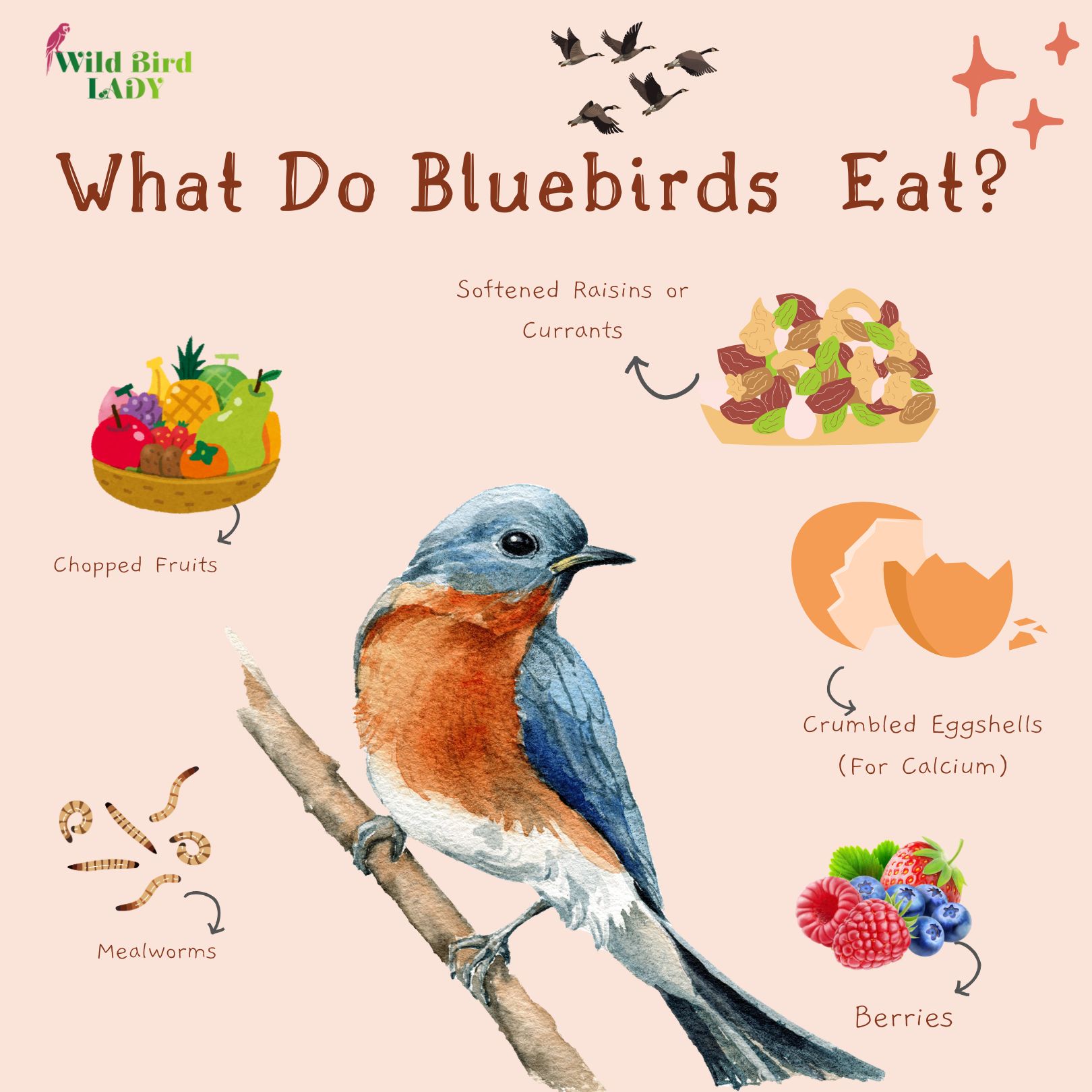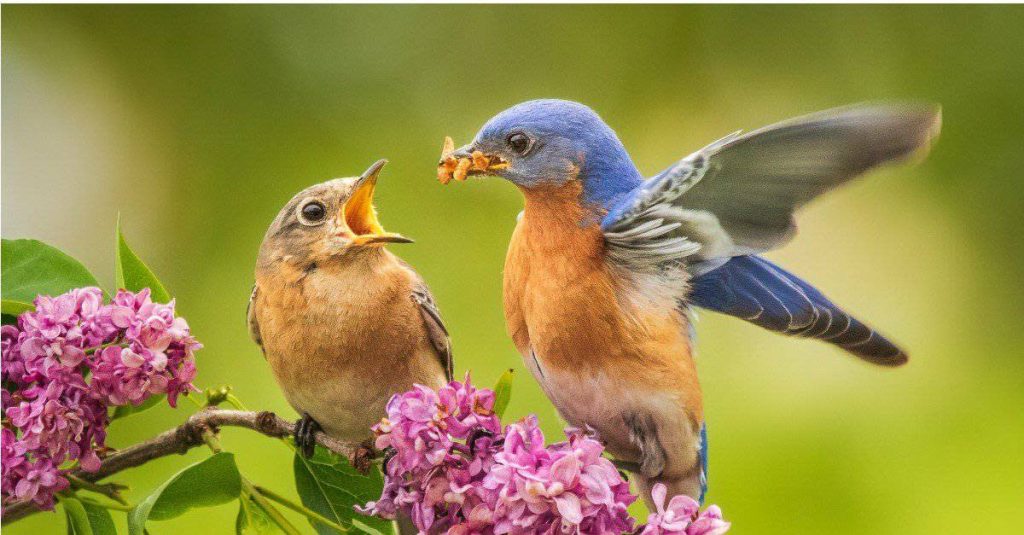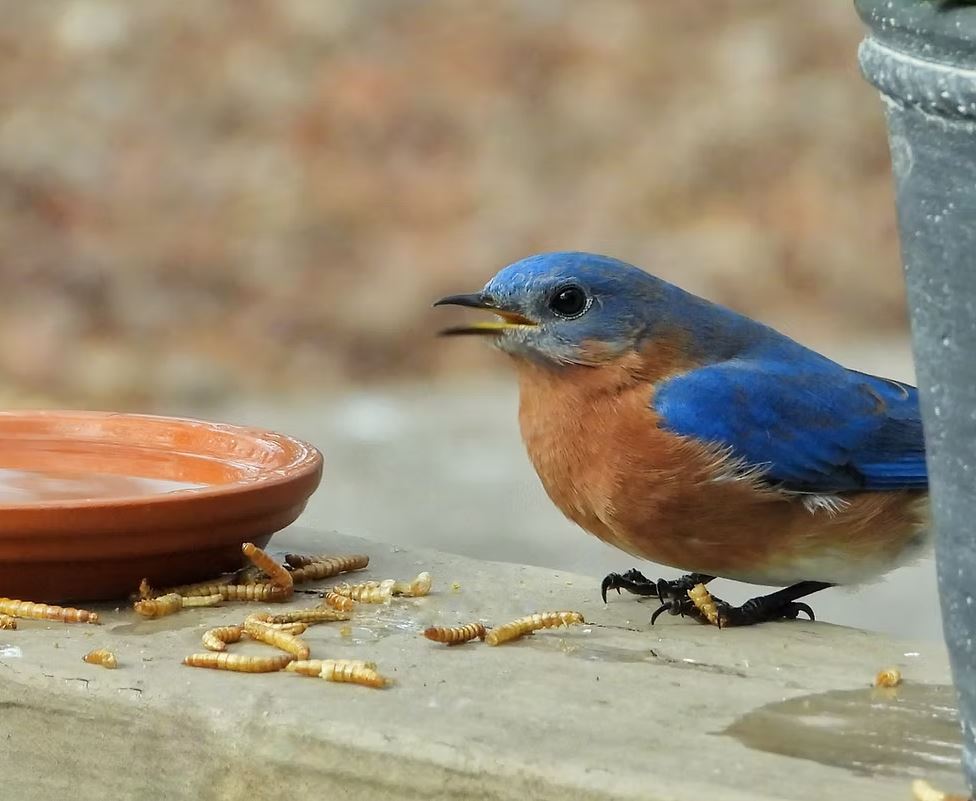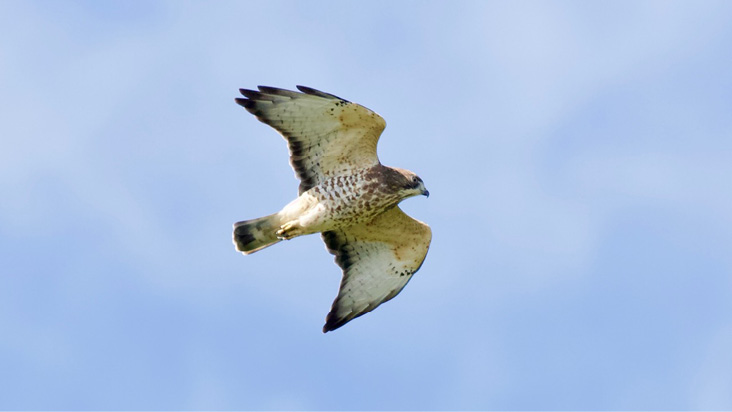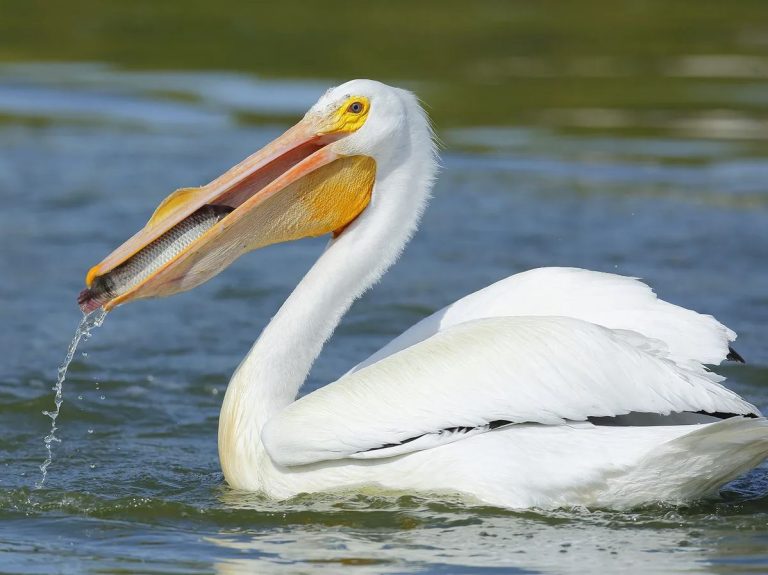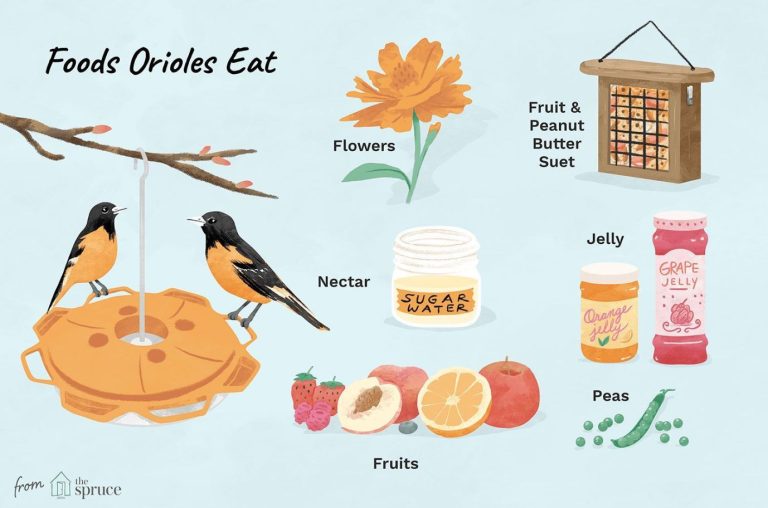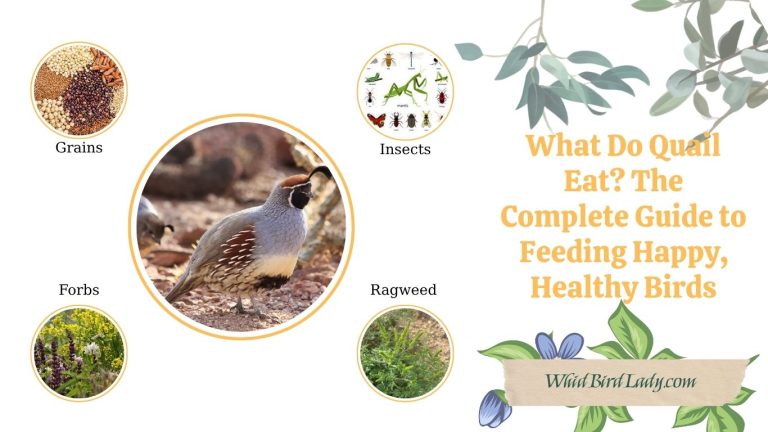What Do Bluebirds Eat? 7 Favorite Foods That Keep Them Coming Back!
Bluebirds are some of the most beloved backyard visitors in North America, thanks to their brilliant blue plumage, cheerful songs, and gentle demeanor. If you’ve ever spotted a bluebird in your yard or on a trail, you know how magical the moment can be. But attracting these beautiful birds isn’t just about luck—it’s about knowing what bluebirds eat and how to offer it to them.
Whether you’re hoping to support wild populations or simply want to enjoy their presence up close, providing the right food is key. In this comprehensive guide, we’ll explore:
- What bluebirds eat in the wild
- Their 7 all-time favorite foods
- Seasonal feeding tips
- What to avoid feeding bluebirds
- How to set up the perfect bluebird feeding station
Let’s dive in!
What Do Bluebirds Eat in the Wild?
The diet of bluebirds changes slightly depending on the season, their habitat, and food availability. Bluebirds are omnivores, which means they consume both animal and plant matter. However, they heavily favor insects during the warmer months.
Here’s a quick overview:
| Season | Primary Foods |
|---|---|
| Spring/Summer | Insects (beetles, caterpillars, grasshoppers, spiders), some fruits |
| Fall/Winter | Berries, dried fruits, seeds (when insects are scarce) |
Insects Make Up Most of Their Diet
During spring and summer, bluebirds rely on a high-protein insect diet to fuel breeding, nesting, and raising their young. These include:
- Caterpillars
- Grasshoppers
- Beetles
- Spiders
- Crickets
- Ants
- Snails
Insects not only offer essential nutrients but are also easy for nestlings to digest.
Fruits Come Into Play in Cooler Months
When insect populations dwindle in the fall and winter, bluebirds switch to fruits and berries to survive. These sugary snacks provide the energy needed to stay active in cold weather.
The 7 Favorite Foods of Bluebirds
While bluebirds will eat a wide variety of foods, they have some undeniable favorites. Here are the top 7 that will keep them coming back to your backyard:
1. Mealworms (Live or Dried)
Why They Love It:
Mealworms are the gold standard when it comes to feeding bluebirds. They mimic the insects bluebirds naturally eat and are packed with protein.
How to Offer:
Place live or dried mealworms in a shallow dish or platform feeder. Live mealworms are more appealing, but dried ones are more convenient. Soaking dried worms in water for 10–15 minutes can help hydrate them.
Pro Tip:
Start feeding in early spring to attract nesting pairs.
2. Waxworms
Why They Love It:
These soft-bodied larvae are rich in fat, making them an excellent treat—especially during cold snaps.
How to Offer:
Like mealworms, waxworms should be placed in a dish feeder. They’re a bit more expensive, so use them as a special treat rather than a staple.
3. Berries
Why They Love It:
Bluebirds love natural fruits, especially during late fall and winter when insects are scarce.
Favorite Berries Include:
- Dogwood berries
- Elderberries
- Holly berries
- Juniper berries
- Sumac
- Mulberries
How to Offer:
Plant native berry-producing shrubs in your yard. You can also place chopped fruit or berry suet on a platform feeder.
4. Suet (Berry- or Insect-Based)
Why They Love It:
Suet provides high-fat energy, perfect for winter months. Bluebirds especially enjoy berry or insect blends over standard beef-fat suet blocks.
How to Offer:
Use suet cages or crumble suet onto a tray feeder. Keep it out of direct sun in warmer weather to prevent melting.
5. Chopped Fruits
Why They Love It:
Bluebirds enjoy soft fruits like apples, pears, and grapes—especially in colder months when insects are less available.
How to Offer:
Chop into small, bite-sized pieces and place on a tray or dish feeder. Avoid citrus, which they usually ignore.
6. Softened Raisins or Currants
Why They Love It:
These dried fruits are sweet and easy to digest after soaking, mimicking natural fall berries.
How to Offer:
Soak raisins or currants in warm water for 30 minutes before feeding.
7. Crumbled Eggshells (For Calcium)
Why They Love It:
Female bluebirds, especially during nesting season, need extra calcium for egg production.
How to Offer:
Sterilize eggshells by baking them at 250°F (120°C) for 10 minutes, crush them, and sprinkle them on a platform feeder.
How to Feed Bluebirds in Your Backyard
Feeding bluebirds is a rewarding experience, but it requires a bit of intention and strategy. Unlike more aggressive or opportunistic birds, bluebirds are gentle, cautious, and selective. Simply scattering seed won’t do the trick. To consistently attract and support bluebirds, you need to create a dedicated feeding setup tailored to their preferences and behavior.
Here’s how to build the perfect bluebird buffet right in your backyard:
1. Use a Bluebird-Only Feeder
Bluebirds often get bullied off traditional feeders by larger, more assertive species like starlings, jays, and even grackles. That’s why using a specially designed bluebird feeder is so important.
Features of a Good Bluebird Feeder:
- Small entry holes: Keep out larger birds and squirrels while allowing bluebirds easy access.
- Clear sides or dome tops: Bluebirds are visual feeders, so they’re more likely to visit if they can see the food from a distance.
- Mealworm cups: Some feeders have built-in dishes designed specifically for offering live or dried mealworms—the bluebird’s favorite treat.
Types of Feeders That Work Well:
- Caged feeders: Wire mesh cages around the feeder allow entry only for small birds.
- Platform feeders with guards: Open-style but placed in protected zones.
- Dome feeders with adjustable height: The dome can be lowered to exclude larger birds.
Tip:
If you’re feeding live mealworms, use a slick-sided cup or glass dish to keep the worms from crawling out. Bluebirds will quickly learn where the goodies are!
2. Place Feeders in Open, Safe Spaces
Bluebirds thrive in open habitats such as meadows, parks, pastures, and backyards with short grass. They like clear sightlines and nearby perches for hunting insects and keeping watch for predators.
Placement Guidelines:
- Height: Mount feeders 5–6 feet off the ground—high enough to deter some predators but still within easy reach for cleaning and refilling.
- Distance from cover: Keep feeders 10–15 feet away from dense shrubs or thickets, which can conceal cats or snakes.
- Proximity to nesting boxes: If you’re using bluebird nest boxes, place feeders within 20–30 feet. This helps feeding parents save energy during breeding season.
Avoid placing feeders:
- In heavy shade (bluebirds prefer sunlit areas)
- Near busy human activity (they spook easily)
- Under overhangs or eaves where droppings and debris collect
Tip:
If you have fences, clotheslines, or shepherd’s hooks nearby, they can serve as ideal perches for bluebirds to scout the feeder before landing.
3. Keep Food Fresh and Clean
Bluebirds are much more sensitive to spoiled food than some other backyard birds. Moldy fruit or dried-out mealworms can lead to digestive issues or even disease outbreaks. Cleanliness is essential to keeping your bluebirds healthy and returning.
Best Practices:
- Change food daily: Especially during warm, humid months or rainy spells when spoilage is faster.
- Store food properly: Keep dried mealworms and suet in airtight containers, and refrigerate fruit if preparing in advance.
- Sanitize feeders regularly: Wash with hot water and mild soap at least once a week—more often during nesting season. Rinse thoroughly and air dry.
Warning Signs to Watch For:
- Foul odors from the feeder
- Mold or discoloration on fruit
- Clumping or drying of dried mealworms
- Signs of ants, flies, or rodent activity
Tip:
Use mesh-bottom trays for good drainage if you’re feeding fruit, and avoid feeders without ventilation holes.
4. Provide Clean, Shallow Water Sources
Water is just as important as food—especially for bluebirds, who drink frequently and love to bathe. During the summer, water keeps them cool and hydrated. In winter, it can be a life-saving necessity when natural sources freeze.
What Bluebirds Prefer:
- Shallow birdbaths (1–2 inches deep)
- Gently sloped edges for easy entry
- Rough surface bottoms for grip
- Moving water like drippers or misters, which attract them even more than still water
Water Maintenance Tips:
- Change water daily, especially in warm months
- Scrub birdbaths weekly with a brush and diluted vinegar to prevent algae and bacteria buildup
- Avoid chemicals like bleach or antifreeze
Winter Tip:
Use a heated birdbath or a safe birdbath de-icer to provide drinking water when everything else is frozen. Bluebirds are more likely to visit a yard that offers open water during winter.
Bonus: Keep Predators and Competitors Away
Because bluebirds are so gentle, they often abandon feeders if harassed by other wildlife.
Steps You Can Take:
- Install baffles or guards on feeder poles to deter raccoons and squirrels
- Use baffle domes above feeders to discourage starlings and larger birds
- Never offer cracked corn, millet, or sunflower seeds that attract aggressive species
- Place feeders away from popular feeders used by jays, doves, or blackbirds
By thoughtfully designing your feeding setup with these tips in mind, you’ll create an inviting and safe environment for bluebirds. Once they’ve found your feeder and feel secure, they’ll return day after day—sometimes with mates or fledglings in tow.
And remember: consistency is key. Bluebirds are creatures of habit, so once they associate your yard with food, water, and safety, you’ll have year-round joy from one of nature’s most stunning songbirds.
What Not to Feed Bluebirds
While it may be tempting to offer kitchen scraps or typical birdseed, some items can be harmful or simply ignored.
Avoid These Foods:
- Black-oil sunflower seeds (they prefer softer food)
- Bread or crackers
- Raw peanuts (risk of mold/toxins)
- Citrus fruits
- Salty or sugary human foods
Bluebirds have delicate systems and specific preferences—so it’s best to keep it natural.
Seasonal Feeding Tips
Each season comes with its own dietary challenges. Here’s how to adjust your offerings year-round:
Spring (Breeding Season):
- Focus on live mealworms for high protein
- Add calcium sources (eggshells) for nesting females
- Keep feeders clean to prevent diseases spreading in warm, wet conditions
Summer (Fledgling Support):
- Continue mealworms and soft fruits
- Use shallow dishes so young bluebirds can feed easily
- Offer fresh water for hydration
Fall (Migration Prep):
- Increase fruit offerings like elderberries and chopped apples
- Reduce protein as insects decline
- Consider berry suet blocks
Winter (Survival Mode):
- Switch to high-fat foods: suet, raisins, waxworms
- Keep feeders full during snow or ice
- Provide heated birdbaths if possible
Planting for Long-Term Success
If you want to attract bluebirds naturally, one of the best things you can do is plant a bird-friendly yard. Here are some ideas:
Native Plants that Bluebirds Love:
- Serviceberry (Amelanchier)
- Eastern Red Cedar (Juniperus virginiana)
- Dogwood (Cornus florida)
- American Holly (Ilex opaca)
- Mulberry (Morus spp.)
These plants offer berries, shelter, and insect-attracting foliage all in one.
Frequently Asked Questions (FAQs)
Q: Do bluebirds eat birdseed?
A: Not usually. They don’t crack seeds like finches or cardinals. Bluebirds prefer insects and soft foods.
Q: Can I feed bluebirds year-round?
A: Yes, but adjust food types based on the season. Focus on insects in summer and fruits/suet in winter.
Q: How do I keep starlings from stealing bluebird food?
A: Use specialty bluebird feeders with restricted entrances or feed live mealworms, which starlings are less interested in.
Q: Are dried mealworms good enough?
A: Yes, though live ones are preferred. Soaking dried worms in warm water improves palatability.
Final Thoughts: Let the Bluebirds Come!
Now that you know what bluebirds eat, you’re well on your way to becoming a backyard bluebird whisperer. By offering a mix of high-protein insects, seasonal fruits, and thoughtful feeding stations, you’ll create a haven for these stunning birds.
The best part? Once bluebirds discover your yard is a reliable food source, they’ll keep coming back—sometimes even bringing their young. That’s the magic of mindful bird feeding.
So go ahead—fill that feeder, soak those mealworms, and enjoy the fluttering blue joy right outside your window.
Read Also:

